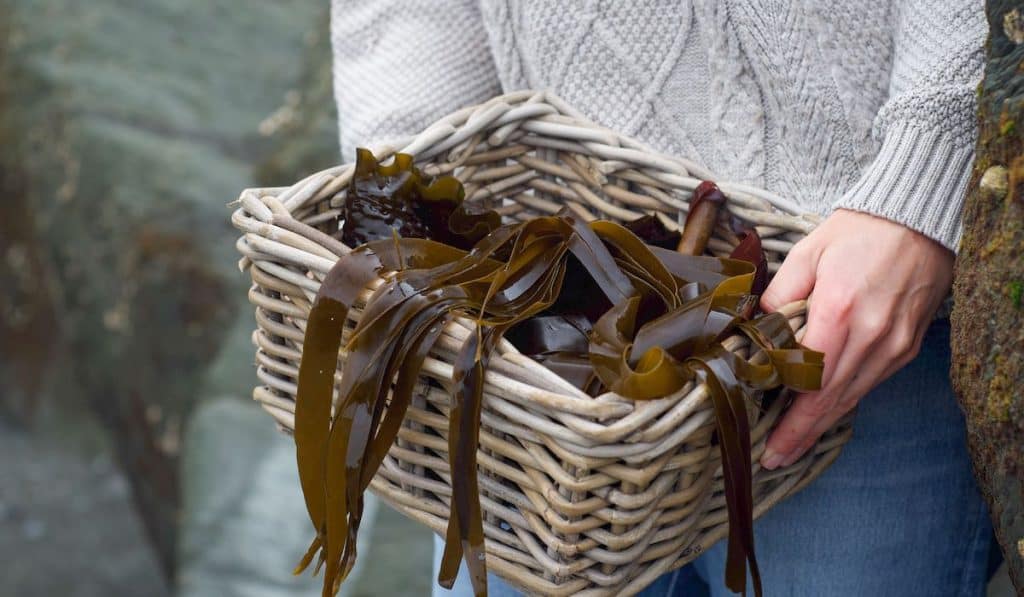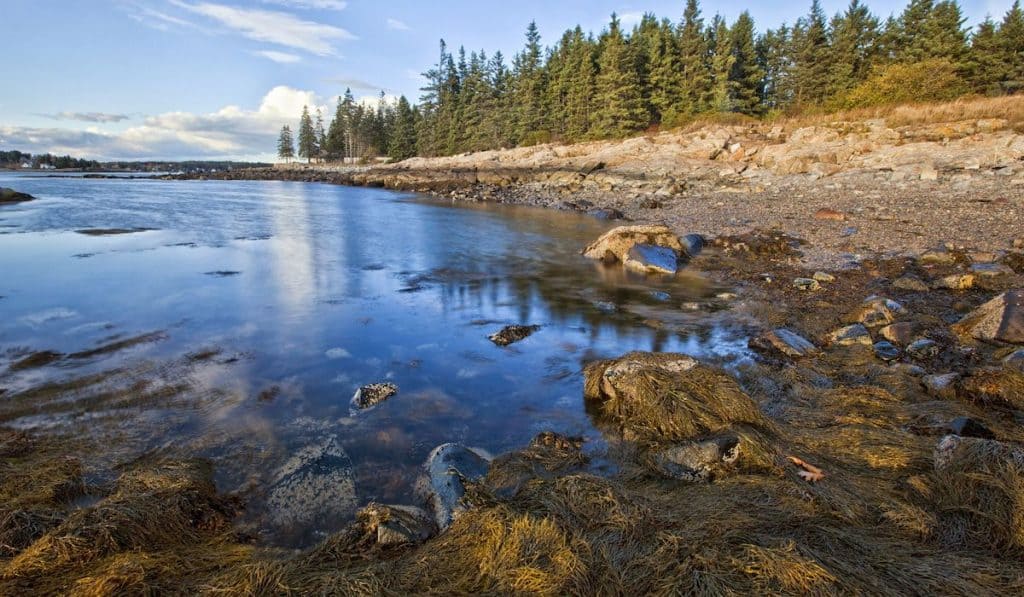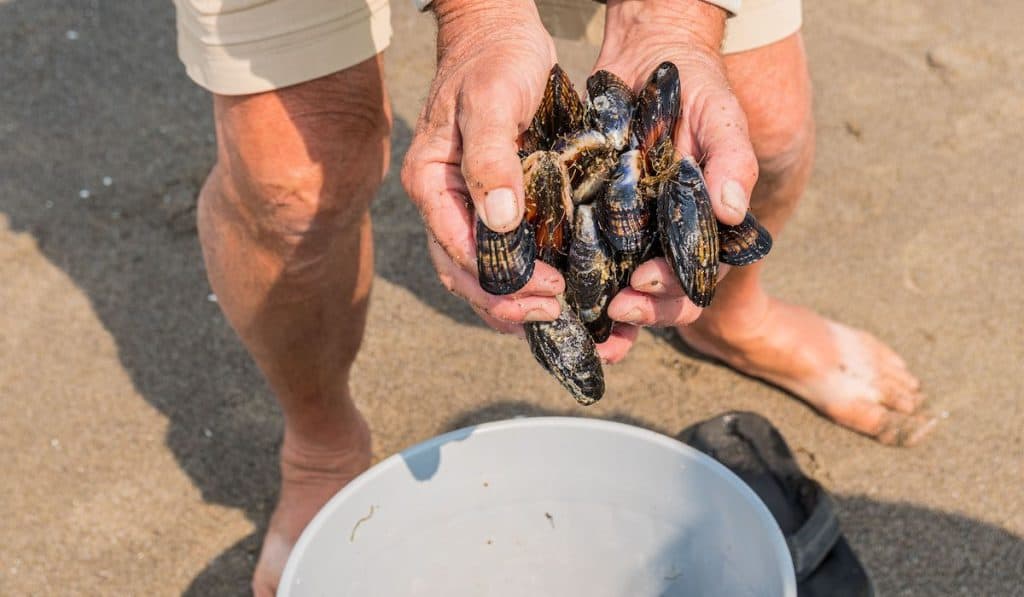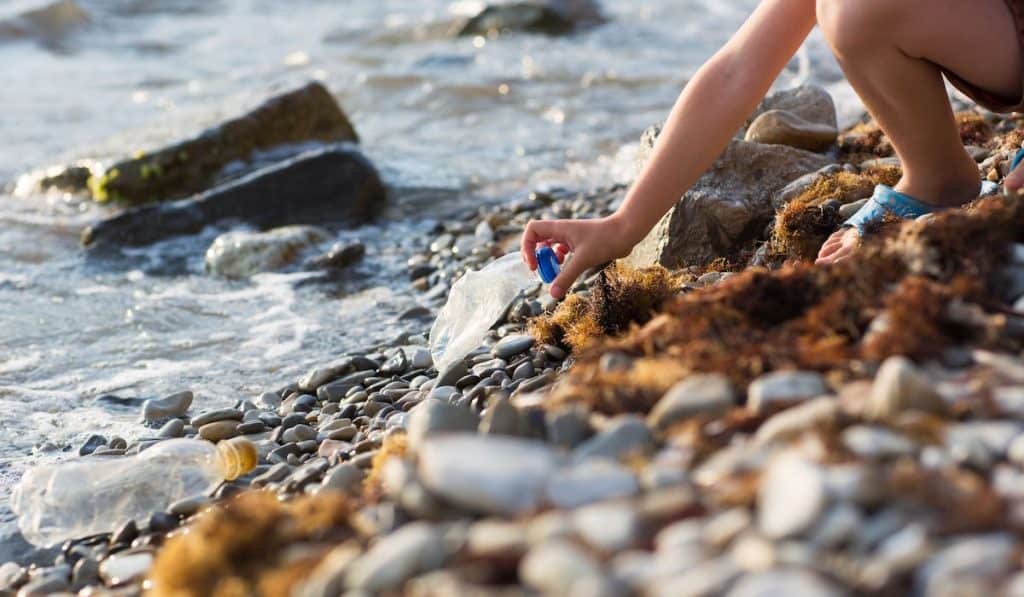Maine’s coast is breathtakingly beautiful, with rocky cliffs, and sandy beaches.
And the diverse coastal ecosystem is a seafood lover’s paradise.
We are talking seaweed, shellfish, clams, mussels, oysters, herbs, and plants just waiting for you to pluck and turn them into something delicious.
If you are looking to discover coastal Maine, here is everything you need to know about foraging for edible delights to uncover nature’s bounty.

What Is Coastal Foraging?
Coastal foraging is the gathering of edible plants and marine life in order to practice sustainable living.
It involves harvesting marine-based resources in a way that they can regenerate while the ecosystem remains balanced.
But coastal foraging has its drawbacks and benefits as shown in the table below.
| Benefits | Drawbacks |
| There are ample foraging opportunities, so you get to enjoy a variety of edible plants, seaweed, fish, shellfish, and marine life. | Practicing unsustainable foraging practices can harm marine life and disrupt habitats. |
| Allows you to connect with nature, learn about local ecosystems, and develop a deeper appreciation for the environment. | It is a risky affair if you do not understand the coastal ecosystem in order to know which plants and animals are harmful to your health. Also, you risk stepping on slippery rocks, or unpredictable tides. |
| Consuming coastal foraged foods has a ton of health benefits, for example, seaweed is an excellent source of iodine, antioxidants, vitamins, and minerals. | Seasonal limitations due to climate change and environmental factors can affect the availability of edible foods. |
| Can be a sustainable way to obtain food, when practiced responsibly, by selective harvesting and respecting legal regulations, contributing to the preservation of ecosystems as it relies on natural resources that replenish themselves. | You may need to acquire additional knowledge and skills to understand edible species, proper identification, and safe harvesting techniques. |
| Contributes to local culinary traditions and provides a unique and authentic food experience. | |
| Contribute to the local economy, by supporting small-scale foragers and fishermen, and also promotes sustainable tourism and culinary experiences. |
Safety Precautions and Legal Considerations

Coastal foraging can be very dangerous if not done correctly.
These risks are not on your life only, but there’s a chance of you getting fined or arrested for not following the relevant regulations and obtaining any necessary permits.
Therefore, before you go coastal foraging in Maine, you need to do the following:
1. Understand the current regulations and restrictions on the particular area you intend to go foraging in.
The most reliable source for these regulations and restrictions is the Maine Department of Marine Resources.
Remember, different areas have varying regulations regarding harvesting methods, quantities, and protected species.
Therefore, brush up your knowledge on the current rules so that you do not get into trouble by foraging or harming endangered species like green, Kemp’s Ridley, leatherback, and loggerhead sea turtles.
Or whales like the blue whale, finback whale, and humpback whale.
2. Be cautious of the potential risks and wear the proper attire and footwear.
Coastal regions attract different tidal movements depending on the weather.
And in coastal Maine, it can be quite unpredictable. However, tidal tables can help you estimate the low tide periods which are safe for foraging.
Also, due to the common strong winds and occasional stormy weather, ensure you do the following:
- Wear protective clothing. However, this does not mean you wear heavyweight clothing like you are foraging on the north coast of Alaska, which is very cold. In Maine, you should layer up in lightweight breathable protective clothing to protect you against the sun, wind, and potential encounters with poisonous marine life like box jellyfish.
- Wear non-slip footwear. These shoes offer good traction while walking on wet and uneven surfaces like you would find in coastal Maine. Also, wear closed-toed footwear or waders to protect your feet from sharp shells, rocks, and other potential hazards in the water.
- Protect yourself from the sun. Wear sunscreen or hats to protect against prolonged exposure to the sun’s harmful rays.
Remember that having a fun coastal foraging adventure requires keeping yourself safe while also respecting the ecosystem around you.
Equipment and Gear Essential for a Successful Coastal Foraging Experience
To enjoy coastal foraging, you need to have the essential equipment and gear. These include:

Gathering tools
Foraging at the coast is not like going to purchase seafood at the grocery store where there are carts to put the produce in waiting for you.
No, you need to bring your own gathering tools just like you carry your fishing gear while you go fishing.
Therefore you need to carry:
- Nets with fine mesh to capture edible mobile marine organisms like small fish, and shrimp.
- Watertight average-size buckets with lids to store your larger harvest like clams, mussels, wet seaweed, and shellfish.
- Protective gear like well-fitting comfortable neoprene gloves as they are waterproof and also protect your hands from sharp rocks and shells.
- First aid kit and emergency supplies
Navigation tools
These include virtual maps or GPS. But if you are up for some old-school adventure, get maps of the Maine coastal region you intend to forage.
Then grab a compass to help you plan your route, determine your positions and navigate to specific foraging spots by using the four cardinal points (north, south, east, west) or degrees.
Suitable containers for transporting foraged items
You need strong baskets preferably with a handle for easy carrying.
The baskets should be breathable or drain water to prevent waterlogging of your foraged harvest.
Also, to ensure that your hard work of foraging wasn’t for nothing, carry a cooler(s) or insulated bags with ice packs to keep your harvest, like shellfish, chilled and fresh during transportation.

Edible Resources You Can Find Along Coastal Maine
There are various edible resources available in coastal Maine. You can harvest:
- Seaweed like kelp, nori, dulse, and wakame and algae varieties
- Shellfish and crustaceans such as clams, mussels, lobsters, and oysters
- Edible plants like berries, mushrooms, fiddleheads, purslane, sea rocket, sea samphire, orache, and wild leeks
- Fish and other marine species including cod, haddock, pollock, tuna, and mackerel
However, as you do your foraging, you need to consider these sustainable practices:
- Do not harvest with a now mentality. Instead, keep in mind that you will be back in a few weeks or days to forage again. So only harvest mature seaweed and leave the younger plants to grow and reproduce.
- Cut seaweed at the base close to the holdfast but do not uproot them entirely. Cutting seaweed at the base allows them to regenerate and regrow, ensuring the long-term sustainability of the seaweed population.
- Harvest seaweed from areas with clean water and minimal to less pollution. Seaweed has the tendency to absorb and accumulate toxins around it. As a result, if you choose a polluted or contaminated coastal area to forage, you will end up consuming seaweed containing harmful substances that endanger your life.
- Practice sustainable harvesting by never picking all your food from one area. For example, when harvesting seaweed, leave a portion to support the ecosystem as other marine organisms feed on it too. Also, this allows for more growth that you can harvest later on.
- Avoid trampling on fragile plants, disturbing small animals, or damaging rocks as you forage. Some organisms use these rocks for shelter.
- Do your part to conserve the coastal habitats. You can achieve this by supporting organizations or initiatives that support the conservation of the coastal ecosystem. Also, educate others on the benefits of responsible coastal foraging.

Why Should You Clean Up After Foraging?
When you finish foraging, ensure you do not leave behind any trash or litter as this may be harmful to the environment and the ecosystem in several ways.
For starters, it disrupts the natural balance of the ecosystem.
Plastic trash takes years to decompose, polluting the environment and endangering marine life that comes into contact with it.
For example, a sperm whale appeared on a Scottish beach dead after having swallowed over 220 pounds of plastic trash.
Sea species are not as intelligent as humans and cannot distinguish dangerous things that are foreign to them.
It is your responsibility to pick up any trash you brought with you or find laying around as you forage.
It also pollutes the water, affecting its purity and the health of aquatic species.
How? Plastics in the ocean or any body of water that supports aquatic life cause indigestion.
Since these animals mistake plastics for food, consuming them causes obstructions in the digestive system, which can lead to malnutrition, internal damage, and ultimately death if not treated on time.
Also, plastic debris like fishing nets, ropes, and storage containers cause entanglement that can lead to suffocation or drowning.
Conclusion
Coastal foraging in Maine is rewarding as this region is a treasure trove of edible delicacies that are perfect for any diet.
However, to continue enjoying these nutritious flavourful foods and fruits, you need to practice sustainable harvesting. This is where you are mindful of the quantity you harvest and also leave some to ensure continuous growth.
So, as you forage through the Maine coastal ecosystem, remember to leave the area in a state where the other organisms are able to survive.
Resources:
- https://web.archive.org/web/20230129021734/
- https://hobbyknowhow.com/coastal-foraging-southern-california/
- https://outpost.longwharfsupply.com/the-outpost/a-rare-adventure-coastal-foraging
- https://www.lowimpact.org/categories/coastal-foraging
- https://mainehealthwellness.com/foragers-paradise
- https://www.themainemag.com/a-beginners-guide-to-foraging-in-maine/
- https://www.fiftygrande.com/a-chefs-guide-to-foraging-in-maine/
- https://www.healthline.com/nutrition/iodine-rich-foods#TOC_TITLE_HDR_2
- https://www.maine.gov/dmr/home
- https://digitalmaine.com/cgi/viewcontent.cgi?article=1053&context=ifw_docs
- https://www.etravelmaine.com/dining/maine-wild-edible-plants/
- https://natureroamer.com/coastal-foraging/
- https://abcnews.go.com/International/sperm-whale-found-dead-scotland-beach-220-pounds/story?id=67437630





